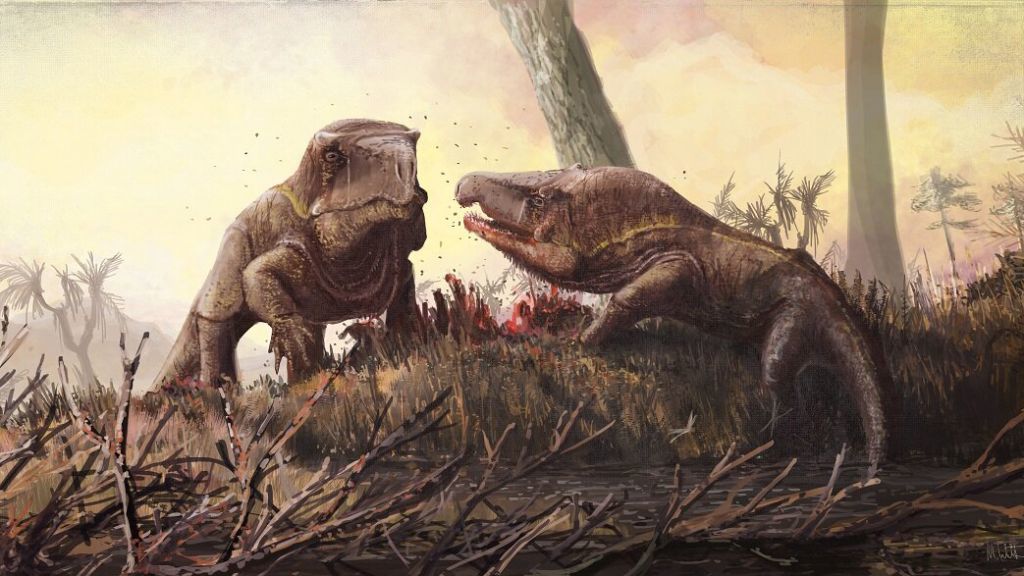Create a free profile to get unlimited access to exclusive videos, sweepstakes, and more!
Sorry T-Rex, but this hypercarnivore’s huge head and dagger teeth were way fiercer

Tyrannosaurus Rex is usually the dinosaur that comes to mind when think of the stereotypically fiercest prehistoric predator. Maybe T-Rex was fierce, but the star of the Jurassic Park franchise (at least until the Indo-hybrids took over) had nothing on the most terrifying prehistoric murder machine ever.
Erythrosuchidae could probably beat the you-know-what out of a T-Rex in a fight over a fresh kill if the two species had lived during the same time. These Triassic “hypercarnivores,” whose reign of terror was about 250 million years ago, had enormous heads and serrated teeth that were almost literal steak knives. New research has now unearthed why they evolved this way, and it definitely had something to do with their insatiable craving for meat.
“Erythrosuchids do indeed appear to have disproportionately large skulls … and [this] may reflect the invasion of hypercarnivorous niches by these groups following the Permo-Triassic extinction,” said Richard J. Butler, a professor of paelobiology at the University of Birmingham, and colleagues, who recently published their findings in Royal Society Open Science.
What Butler and his team realized was that the skulls of erythrosuchids must have evolved to such a freakishly disproportionate size to be the main weapon for a creature that feasted exclusively on meat. Even more bizarre is that the skulls were found to be full of air pockets, which made them surprisingly light. These killers had insanely strong neck muscles that gave them the power to get their prey in the jugular and tear off bloody mouthfuls of flesh.
While they are related to archosaurs, a broader group that included not just dinosaurs and pterosaurs but also ancient crocodilians and birds, erythrosuchids stand out because of their strange proportions. The researchers carefully measured the length of the head and femur in the erythrosuchid fossil specimens and made comparisons to other four-limbed animals. There was no competition. They concluded there is no other reptile, extant or extinct—that means you, T-Rex—with a head this large in proportion to its body.
Because of “the relative increase in the size of the skull compared with the postcranial skeleton,” Butler and his team “hypothesize that they represent an adaptation towards hypercarnivory in these groups.”
Even scarier is how the heads only kept getting bigger as the bodies of similar erythrosuchid species continued to grow in size as they evolved, though they would always be incredibly large compared to the reptiles’ bodies.
No wonder species like Garjainia madiba (pictured above) could tear up a meal with no problem.
(via The Royal Society)


























